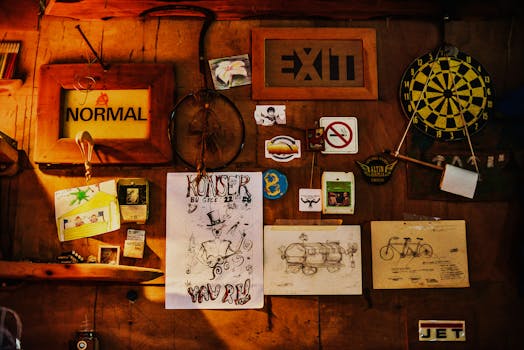Combining Modern Elements with Traditional Art for a Surprising Eclectic Decor
In the world of interior design, the fusion of modern elements with traditional art has emerged as a captivating trend. This eclectic approach not only breathes new life into spaces but also tells a story that reflects the diverse influences of our time. By blending the old with the new, homeowners can create unique environments that resonate with personal style and cultural heritage.
The Allure of Eclectic Decor
Eclectic decor is characterized by its ability to mix various styles, colors, and textures, resulting in a visually stimulating environment. This approach allows for creativity and self-expression, making it increasingly popular among homeowners and designers alike. According to a survey by the American Society of Interior Designers, 60% of respondents indicated a preference for eclectic styles over more traditional or minimalist designs.
Understanding Traditional Art
Traditional art encompasses a wide range of styles and mediums, often rooted in cultural heritage and historical significance. This can include:
- Classic paintings and sculptures
- Textiles such as tapestries and quilts
- Handcrafted pottery and ceramics
- Woodwork and metalwork
Incorporating these elements into modern decor not only honors the craftsmanship of the past but also adds depth and character to contemporary spaces.
Modern Elements: A Fresh Perspective
Modern design is often defined by clean lines, minimalism, and functionality. Key characteristics include:
- Neutral color palettes
- Innovative materials like glass and metal
- Open spaces and natural light
- Smart technology integration
By juxtaposing these modern elements with traditional art, designers can create a dynamic contrast that enhances the overall aesthetic of a room.
Successful Combinations: Case Studies
Several designers have successfully merged modern and traditional styles, resulting in stunning interiors. Here are a few notable examples:
- The Modern Farmhouse: This design style combines rustic elements like reclaimed wood and vintage decor with sleek, modern furnishings. The result is a warm, inviting space that feels both contemporary and timeless.
- Urban Loft: In many urban lofts, traditional art pieces such as classical sculptures or vintage paintings are displayed against exposed brick walls and industrial furniture. This contrast creates a striking visual impact that celebrates both history and modernity.
- Mid-Century Modern: Designers often incorporate traditional textiles, such as Persian rugs, into mid-century modern spaces. The rich patterns of the rugs add warmth and texture, balancing the minimalist furniture and decor.
Tips for Combining Modern and Traditional Elements
To successfully blend modern and traditional styles in your decor, consider the following tips:
- Choose a Focal Point: Select a traditional art piece that will serve as the centerpiece of the room. This could be a large painting or an ornate sculpture that draws the eye.
- Balance Colors: Use a neutral color palette for modern elements to allow traditional art to stand out. Incorporate accent colors from the art into modern furnishings for cohesion.
- Mix Textures: Combine different materials, such as sleek metals with rich woods or soft textiles, to create a layered look that feels inviting.
- Incorporate Personal Touches: Include family heirlooms or pieces from your travels to add a personal narrative to your decor.
The Impact of Eclectic Decor on Well-Being
Research indicates that personalized spaces can significantly enhance well-being. A study published in the Journal of Environmental Psychology found that individuals who feel a connection to their living spaces report higher levels of happiness and satisfaction. By combining modern elements with traditional art, homeowners can create environments that reflect their identity and foster a sense of belonging.
Conclusion
Combining modern elements with traditional art offers a unique opportunity to create eclectic decor that is both visually appealing and deeply personal. This approach not only honors the craftsmanship of the past but also embraces the innovations of the present. By thoughtfully blending styles, homeowners can craft spaces that tell their stories, enhance their well-being, and stand the test of time. As the trend continues to grow, it invites us all to explore the rich tapestry of design possibilities that await in the fusion of old and new.
